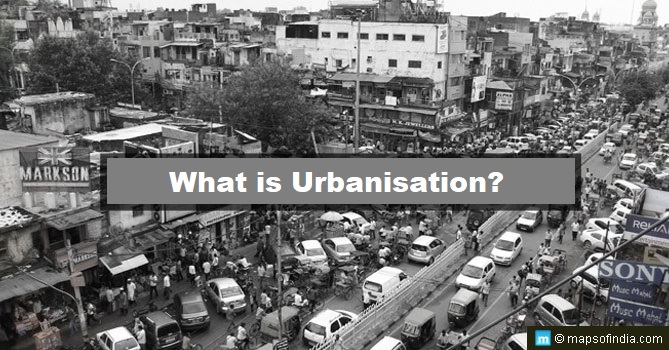It first began in high-income countries (HICs) during the industrial revolution. However, the rate of urbanisation in low-income countries (LICs) is more than in HICs. People migrate due to various reasons such as social factors, which include better education, jobs, healthcare, and other essential services, comprising moderation like newer housing and infrastructure, better technology, hospital care and others.
A country is thought to be urbanised when more than 50% of its population lives in urban cities. As per the United Nations, over half of the world’s population resides in cities. However, when the 20th century started, only 15% of the world’s population lived in urban areas.
According to Conserve Energy Future, “Majority of people move to cities and towns because they view rural areas as places with hardship and backward/primitive lifestyles. Therefore, as populations move to more developed areas (towns and cities) the immediate outcome is urbanisation.”
Advantages of Urbanisation
- Technology and Infrastructure: There is an enhancement in technology and infrastructure as more resources join in to build and contribute.
- Transport and communication: It gives better facility in carrying things from one place to another. Hence, it improves transport services, including communication with varied people from different walks of life as there is a mix of cultures and ethnicities from across the country.
- Nation’s growth: Population moving from one place to another impacts the GDP (Gross Domestic Product) as their standard of living transforms accordingly.
Disadvantages of Urbanisation
- Occupancy: When large numbers of people migrate over a short period, overcrowding becomes an issue, often seen in cities in developing nations. One could feel more pressure and stress when such things happen in their city.
- Housing: It slowly becomes inadequate when people shift to cities across the country. The chaotic or improper way of urbanisation leads to housing shortages. Flats and smaller apartments are built rather than houses with larger gardens to generate more space.
- Risk of transmission: Slums and poor sanitation create a threat for the people when urbanisation occurs informally. Inadequate drinking water facilities, insufficient sewage problems can cause asthma and other diseases. Germs pollute the environment while people change their places.
- Traffic: It does not slow down but increases as populations increase, leading to environmental pollution. It is a concern for human health. Studies suggest that pollution lowers life expectancy in Mexico city.
- 5. Crime: After the people migrate, there is a situation of unemployment with large job seekers; one tries their chances on activities that lead to crimes.
The UN World Urbanization Prospects 2018 report stated that nearly 34% of India’s population now resides in urban areas, which has seen a rise of about three percentage points since the 2011 Census.
The United Nations said that 68% of the world’s population is estimated to live in urban areas by 2050. But, it added, “Together, India, China and Nigeria will account for 35% of the projected growth of the world’s urban population between 2018 and 2050. By 2050, it is projected that India will have added 416 million urban dwellers, China 255 million and Nigeria 189 million.”




